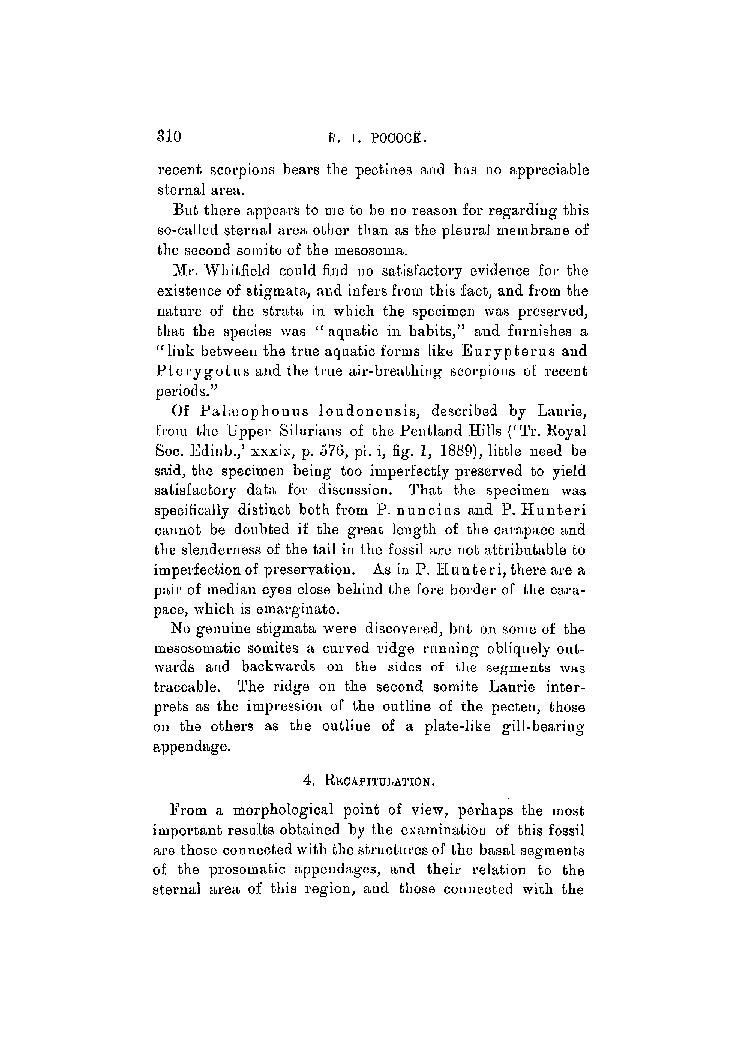recent scorpions bears the pectines and has no appreciable sternal area.
But there appears to me to be no reason for regarding this so-called sternal area other than as the pleural membrane of the second somite of the mesosoma.
Mr. Whitfield could find no satisfactory evidence for the existence of stigmata, and infers from this fact, and from the nature of the strata in which the specimen was preserved, that the species was "aquatic in habits," and furnishes a "link between the true aquatic forms like Eurypterus and Pterygotus and the true air-breathing scorpions of recent periods."
Of Palæophonus loudonensis, described by Laurie, from the Upper Silurians of the Pentland Hills ('Tr. Royal Soc. Edinb.,' xxxix, p. 576, pl. i, fig. 1, 1889), little need be said, the specimen being too imperfectly preserved to yield satisfactory data for discussion. That the specimen was specifically distinct both from P. nuncius and P. Hunteri cannot be doubted if the great length of the carapace and the slenderness of the tail in the fossil are not attributable to imperfection of preservation. As in P. Hunteri, there are a pair of median eyes close behind the fore border of the carapace, which is emarginate.
No genuine stigmata were discovered, but on some of the mesosomatic somites a curved ridge running obliquely outwards and backwards on the sides of the segments was traceable. The ridge on the second somite Laurie interprets as the impression of the outline of the pecten, those on the others as the outline of a plate-like gill-bearing appendage.
4. Recapitulation.
From a morphological point of view, perhaps the most important results obtained by the examination of this fossil are those connected with the structures of the basal segments of the prosomatic appendages, and their relation to the sternal area of this region, and those connected with the
